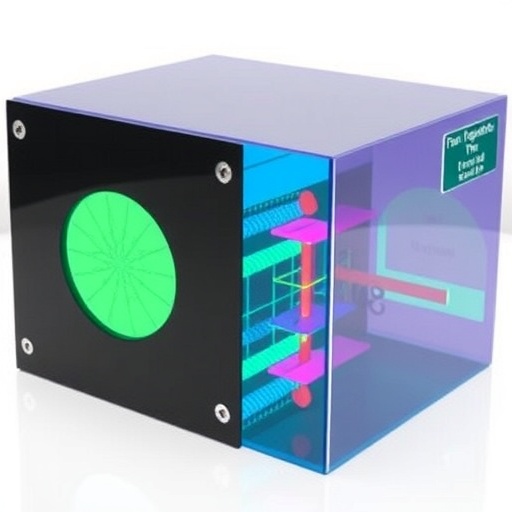Researchers are continuously exploring innovative approaches to enhance the efficiency of proton exchange membrane fuel cells (PEMFCs), a crucial technology for clean energy generation. One of the latest advancements in this field is the optimization of honeycomb bionic flow channel structures. This study, conducted by Xiong, Li, and Niu, delves into the intricacies of flow channel design that emulates natural structures and how these modifications positively affect the overall performance of PEMFCs.
The heart of PEMFC technology lies in its ability to convert chemical energy into electrical energy through electrochemical reactions. The efficiency of this process is significantly influenced by the design of the flow channels that transport reactants—namely hydrogen and oxygen—through the cell. Traditional flow channel designs often fall short in maintaining a uniform distribution of reactants, which can lead to inefficiencies and reduced output. The study by Xiong et al. highlights the potential of honeycomb bionic structures, which can enhance reactant distribution while minimizing pressure drop and facilitating better heat transfer.
By adopting a honeycomb bionic design, the researchers aimed to improve the hydrodynamic performance within the fuel cell. This bionic design mimics the structure and functional efficiency found in nature, leveraging geometric patterns that promote optimal fluid dynamics. The geometry of honeycombs allows for greater surface area while maintaining minimal material usage, translating into both economic and operational advantages for PEMFCs.
The optimization process involved computational fluid dynamics (CFD) simulations that allowed the researchers to better understand how different channel designs impacted reactant flow. Through iterative modeling, Xiong and his team were able to examine parameters such as channel length, width, and angle, determining an ideal configuration that maximizes throughput while maintaining low resistance. The simulation results demonstrated that the honeycomb structure led to an improved reactant distribution within the cell, further enhancing performance metrics.
In addition to enhancing reactant distribution, the honeycomb structure also serves to reduce the likelihood of liquid water accumulation within the fuel cell. Water management is a critical issue in PEMFC operation, as excess water can hinder gas diffusion and ultimately reduce cell performance. The designs tested in this study showed that the honeycomb channels facilitated efficient drainage, thus promoting a more stable operating condition.
Another important aspect of their research was the evaluation of the thermal properties associated with the honeycomb design. Thermal management is essential in ensuring that the fuel cell operates within its optimum temperature range. The study found that the bionic structure promoted more uniform temperature distribution, which is crucial for maintaining electrolyte performance and ensuring longevity of the cell.
Moreover, the researchers conducted physical experiments to validate their simulations, comparing the performance of traditional channel designs against the new honeycomb bionic structures. Their experiments confirmed that the new design resulted in a significant increase in power density, showcasing the potential for real-world application in fuel cell technology. Notably, these practical insights are crucial for industries looking to adopt more efficient fuel cell systems in various applications, such as automotive or stationary energy systems.
The implications of their findings extend beyond mere performance enhancements. By adopting bionic designs, fuel cell manufacturers can potentially lower production costs through the use of less material while still improving output. This aspect could prove vital as the world moves towards greener technologies that not only require efficiency but also sustainability in production processes.
The study also opened discussions on the integration of artificial intelligence and machine learning to further streamline the design processes of flow channels. Future research may involve leveraging advanced algorithms that can predict the best configurations for honeycomb designs, accelerating the innovation cycle within fuel cell technology.
Looking ahead, the researchers anticipate that the advancements in honeycomb bionic flow channel structures could play a significant role in addressing the global energy crisis. As nations strive to reduce carbon footprints and transition towards sustainable energy, innovations such as those presented in Xiong et al.’s study are crucial.
The transition towards cleaner energy technologies emphasizes the importance of enhancing existing systems rather than solely focusing on the development of new technologies. The study’s findings offer a pathway for significant advancements in PEMFC efficiency, aligning with worldwide efforts to embrace sustainable energy solutions.
In summary, Xiong, Li, and Niu’s research marks a promising step forward in the ongoing quest to enhance the performance of PEMFCs through bionic design principles. The detailed investigation into honeycomb flow channel structures presents a compelling case for their utility in modern fuel cell applications.
As the scientific community continues to unravel the complexities of fuel cell technology, studies like this will undoubtedly serve as a foundation for future innovations aimed at overcoming the current limitations in energy conversion efficiency.
Throughout their research, the duo has not only offered technical insights but also showcased the potential for interdisciplinary approaches that incorporate biology and engineering. This type of collaboration highlights the importance of looking beyond conventional paradigms to foster breakthroughs in energy technology.
Ultimately, the findings from this study pave the way for a new generation of highly efficient, economically viable fuel cells that can significantly contribute to a sustainable energy future. The coupling of natural design principles with advanced material science could redefine our approach to energy solutions.
Subject of Research: Optimization of honeycomb bionic flow channel structures for proton exchange membrane fuel cells.
Article Title: Optimization and performance study of honeycomb bionic flow channel structure for proton exchange membrane fuel cells.
Article References:
Xiong, Y., Li, L., Niu, Y. et al. Optimization and performance study of honeycomb bionic flow channel structure for proton exchange membrane fuel cells.
Ionics (2025). https://doi.org/10.1007/s11581-025-06850-9
Image Credits: AI Generated
DOI:
Keywords: Proton exchange membrane fuel cells, honeycomb bionic structures, efficiency optimization, fluid dynamics, sustainable energy.




